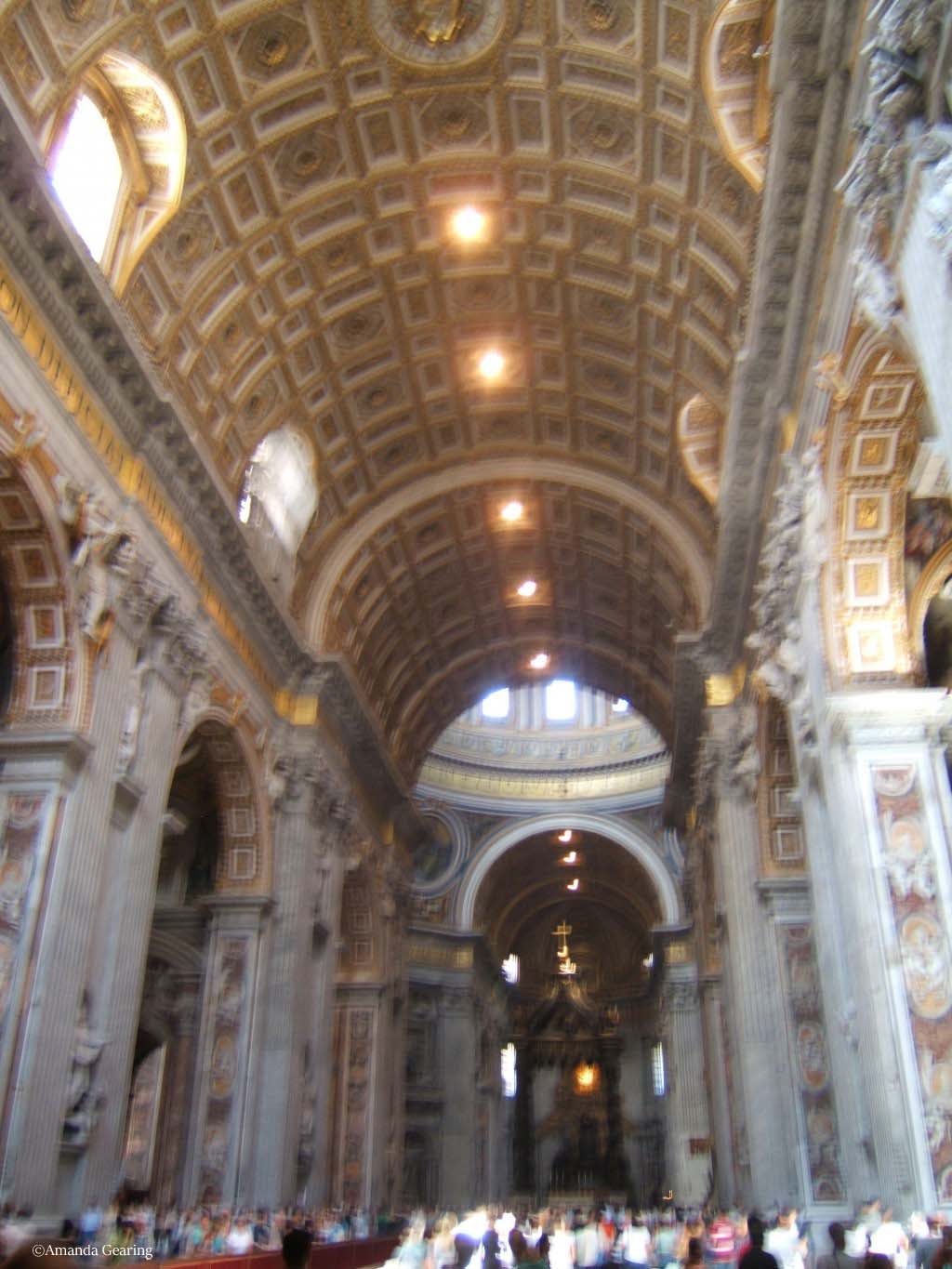Updated on June 26, 2013
A grand building
Stepping inside the main doors of St Peter’s Basilica, noisy hoards of tourists are stunned into silence, looking up and dropping their bottom jaw as they contemplate the sheer size and grandeur of this building.
The eyes are drawn from the huge, ornate marble pillars upwards to the soaring barrel-shaped ceiling that is heavily decorated with gold.
Every detail of the building is not merely architecture but is art and craft as well, from the vast marble inlaid floors to the decorated glass caskets holding the macabre clothed bodies of various ‘saints’.
The church is named for St Peter, the apostle chosen to found the church, and who was martyred by crucifixion in Rome close to the site.
He was buried close by and a shrine was built in memory of him. This shrine was replaced by church buildings and eventually the basilica, in the 1500s.
Many Popes are also buried in the basilica.
The altar is covered by a huge canopy with supported by four life-sized palm trees worked in metal.
Elaborately ornamented chapels are arranged down both sides of the nave, each with its own altar.
A sculpture of the Virgin Mary with Jesus’ body, the ‘Pieta’ by Michelangelo is one of the churches’ greatest artworks.
Michelangelo, who had been painting the Sistine chapel ceiling, was asked to work on the design drawings of the church after the previous architect died.
Michelangelo died before the building was completed but his plans were carefully followed.

Place of Pilgrimage
The basilica is a place of pilgrimage for Catholics who believe in a lineage between St Paul and the subsequent lineage of popes as head of the church.
The square outside the basilica, with its long curved colonnades of stone pillars leading to the basilica is often used for major masses celebrating feast days such as Christmas and Easter when the thousands of people who attend cannot fit into the basilica.
Audio guide to the colonnade
Here is an audio guide for the inside of St Peter’s Basilica by Sister Wendy.
History 
The site of St Peter’s Basilica has been a Christian church since the fourth century.
The current building dates from the 1500s and is one of the largest and greatest Renaissance buildings in the world.
The length of the nave of the church is boasted via measurements set out in the floor indicating the sizes of other major churches around the world.
Its large dome, the tallest in the world, dominates the skyline of Rome.
From the ground, the cross on the top of the dome stands 136.57 metres high, (almost 500 feet)
Its internal diametre of the dome is 41.47metres, slightly smaller than the dome of the Pantheon in Rome and the dome of Florence cathedral.
FACT BOX
St Peter’s Basilica
The Basilica is open every day. Entry is free however a dress code applies nad is strictly enforced. Women must cover their shoulders.
Opening hours during the summer months (April to September) are 7am until 7pm. From October to March opeing hours are 7am- 6pm.
Vatican Museum and Sistine Chapel
To check when the Museum and Sistine Chapel are open, see the Vatican website.
Tickets for the museum are € 16,00 for adults. € 8,00 concession and € 4,00 for students.



Recent Comments